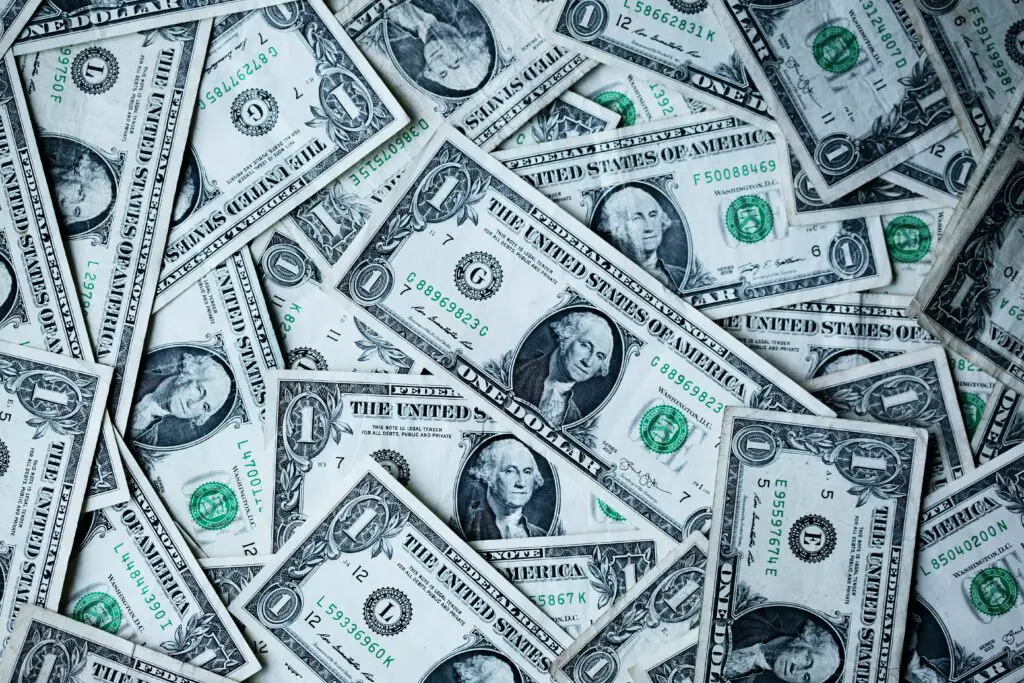You know what the 100-dollar bill looks like- but how about what you don’t know? It does sound fancy right? Well, it may interest you to know that giving the $100 bill a new look was the least concern to the government. The real story behind this move was an observation of the circulation of fake currency- so the dollar bill had to be modified to discourage counterfeiting. In this article we shall see some 100 Dollar Bill Facts.

Check out these 8 amazing facts about the $100 bill below!
The Ink In The New $100 Bill Does Change Color
When you first turned the dollar bill this way and that, you thought you were seeing things right? Well, you’re not weird or color blind for seeing this way.
You see, this color variation is because of the extra tiny pieces of metal that were mixed into the ink.
There Is One $100 Bill That’s Worth $20, 000 And It Could Be Yours
Did you think a $100 bill could only get you a couple of stuff at the grocery store?
Well, you’re right, but not completely.
A $100 bill is a $100 bill… but not when it bears serial number 1.
When the new $100 bill was released, all the serial numbers counting the notes had to start counting from one.
Since every bill is printed only once, then the dollar bill bearing one as its serial number is an automatic rarity- and collectors start keeping a wild eye out for them.
Who knows, the next time the $100 bill is reprinted, you may end up with the special one that’s worth $10 000-$20 000.
There Is Something Strange About The Time On The Clock
Have you ever wondered why the time on the old 100-dollar bill is 4:10 but the new one says 10:30?
I wondered too. I mean, why change the time? And if they really needed to change the time, why? What significance does it hold?
As usual, there are different speculations on the difference in times.
One of them is that J.C. Benzing, the person who engraved the north and south views of the Independence Hall, took the building’s pictures at different times of the day.
Do you believe it?
The Paper The $100 Bill Is Printed On Isn’t Paper At All
Did you always think the $100 bill was made of paper? Yeah? Well, I did, and it turns out both of us are not quite right.
Thing is, the Federal Reserve’s paper is not actually paper but is made up of 75% cotton and 25% linen.
That explains the tiny strands you see when you rip a note by accident, as well as the pleasant feel of the note itself.
Some Groups Have Called For The Death Of The $100 Bill
Counterfeit $100 bills are common- and they are deadly for the economy.
As the production of these fakes increased, some groups have decided to call for the stripping off of the $100 bill’s monetary value.
The situation, according to Mental Floss, has worsened over the years, making economists advocate for the annihilation of the bill; giving people a short time to return their $100 bills before they expire.
The Gold 100 On The Back Isn’t For Fancy
It may look like it, but the big gold numbers behind the 100-dollar bill weren’t included as an afterthought.
Despite being perceived by many people as a fancy design, those numbers were added to the bill to make it easier for those who perceive the world through sound, smell, and touch to determine the bill’s denomination.
In God We Trust Didn’t Start Appearing On The $100 Bill Until 1957
Do you know that “In God We Trust” wasn’t always on the dollar bill?
Until 1956, the motto of the U.S. was “E Pluribus Unum” which translates to “one for many”.
In 1957, “In God We Trust” was first printed on a one-dollar silver certificate, permanently replacing the earlier motto.
The $100 Dollar Bill Clocks 15 Years Before Dying
Yup, a 100-dollar bill ages a whole decade and a half; but only because it isn’t used as much (according to the Federal Reserve)
Another factor that could have contributed to the durability of the 100-dollar bill is the anti-counterfeit control process.
On that $100 which fits into your wallet are numerous anti-counterfeit controls like watermarks, special additives, phosphorescent elements, security fibers, planchettes, and advanced security threads.
Amazing right? I know!
Conclusion
The next time you see a $100 bill, you’ll have an idea or two of what that “paper” went through to become a dollar bill.
Oh, and yes, you may even discover an answer to a trivia you’ll later attend. Who knows, you may find out that you’ve won a prize!


